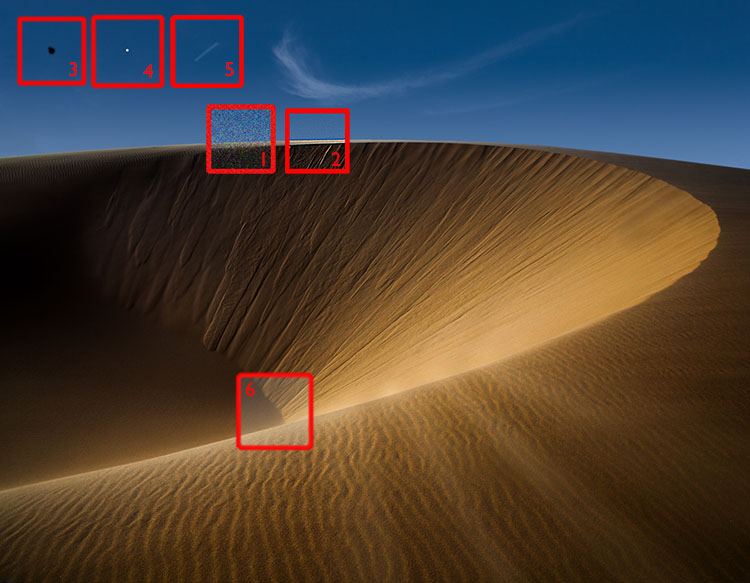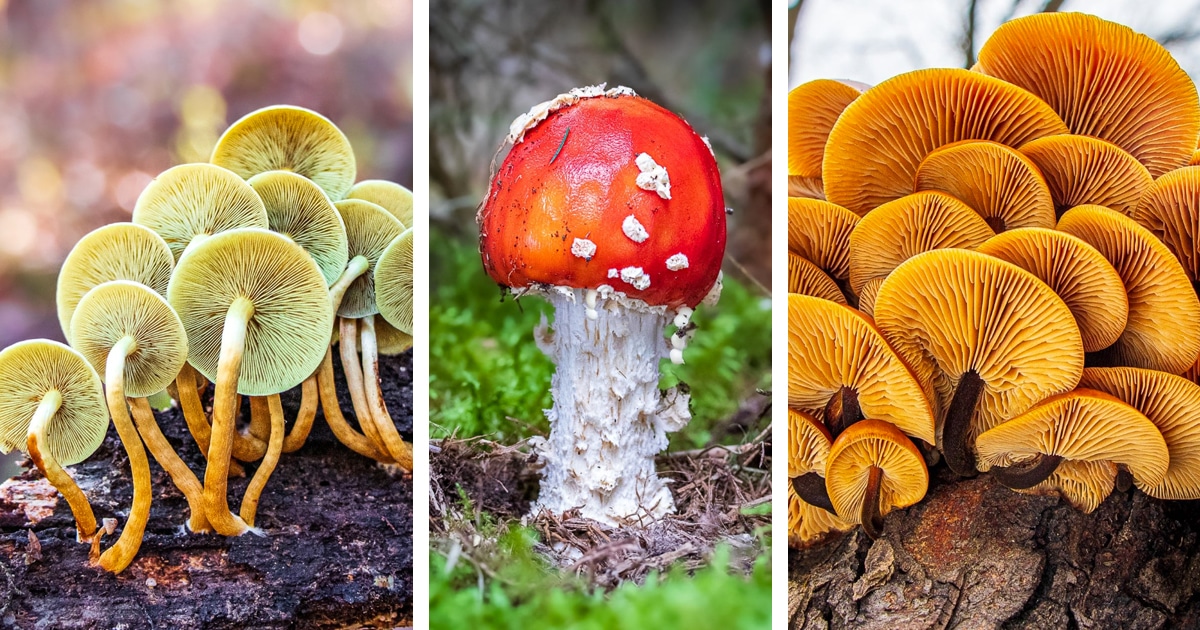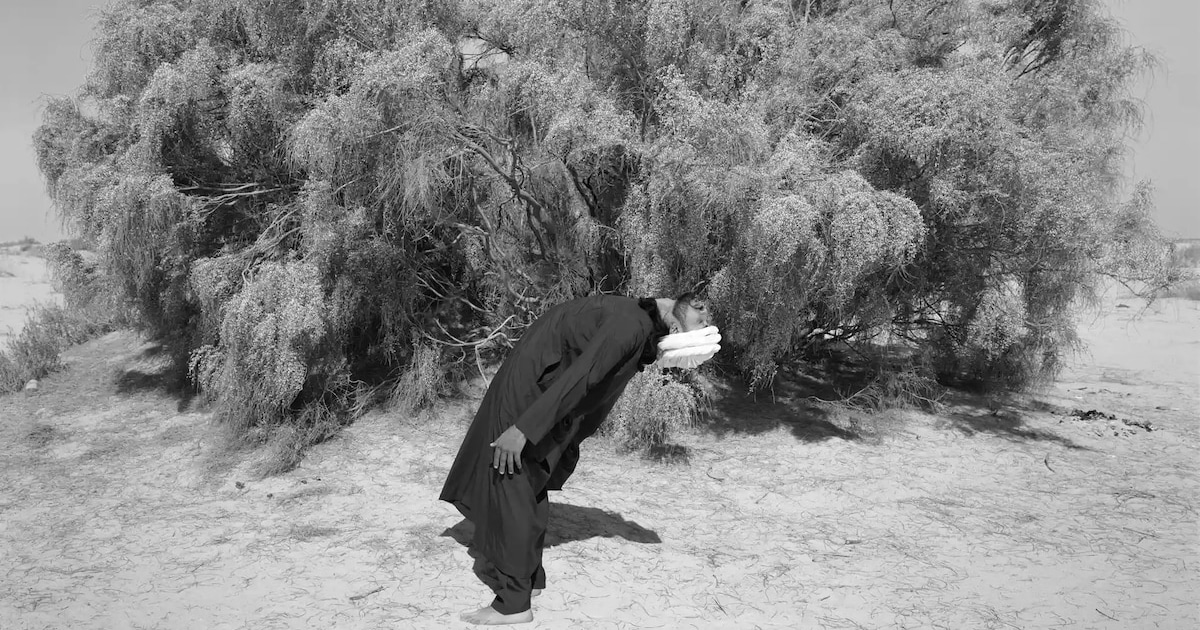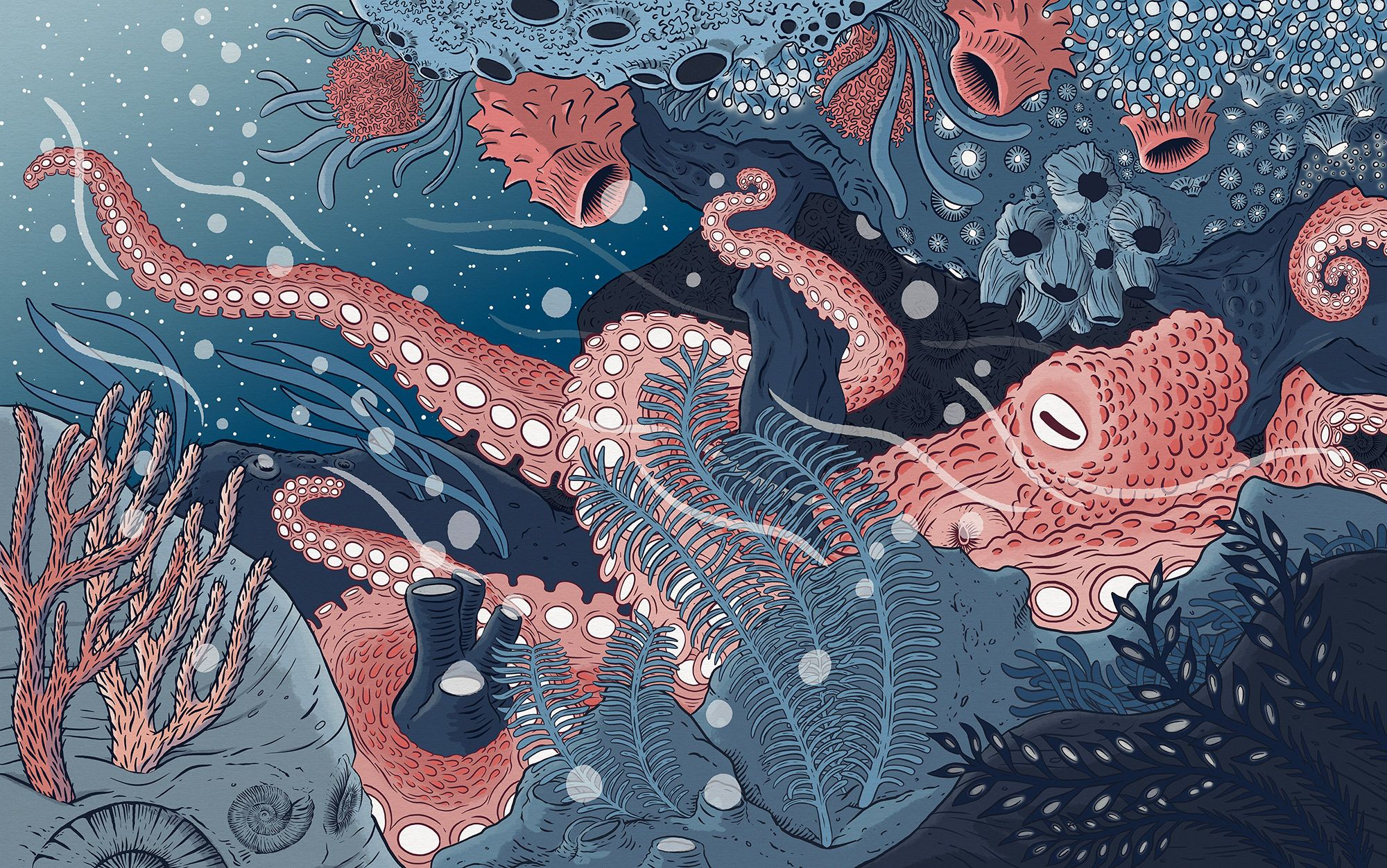- Breathing Light
- Posts
- Breathing Light Issue #66
Breathing Light Issue #66
On the Soft Curl of water and Viridian Jellyfish Dreams

In this Issue
1. Taku Mahi Toi o Te wiki-My Artwork of the Week
2. Korero Timatanga-Frontispiece
3. Photographer's Corner-Five Tips for better landscapes
4. Waiata moo te Ata-Poem for the day
5. Fevered Mind Links (to make your Sunday morning coffee go cold)
6. Koorero Whakamutunga-Endpapers
My Artwork of the Week
Taku Mahi Toi O te Wiki

Jellyfish, Sitka, Alaska 2007 | Canon 1Ds Mk II, EF 24-70/2.8L
“Perhaps he knew, as I did not, that the Earth was made round so that we would not see too far down the road.”
Who says you can’t communicate with animals? Or that they are not trying to communicate with us?
Of course, we know about the interaction between humans and cats, dogs, horses and other domestic animals. Your cat will listen if he wants to, when it suits them, while your dog will integrate his life with yours. I know farmers who can name each of the cows in their dairy herd and tell at a glance if they are off-colour.
But what if we reach further out to species with which we shouldn’t theoretically be able to communicate? Albatross, mice, even cockroaches? If we are all part of the Greater Oneness, why wouldn’t we be able to interact meaningfully with them?
Or, indeed, talk to a jellyfish?
I had gone up to Sitka, in Southeast Alaska, to teach a summer school at the university there. My friend Steve, who spent half of this year as a commercial fisherman up there, and the other half as an artist on the east coast of the way it upper, had organised the gig for me.
One afternoon, he called and suggested we go boating the following day on the sound, which was some 20 miles long. Of course, I replied.
The following day, full of enthusiasm, I turned up ready to go. Our boat was a skiff, basically an oversize surfboard with a powerful outboard motor. Steve’s son was also coming along for the ride, and I watched as the two of them discussed the necessity for a large handgun against the grizzly bears on Baranoff Island.
We meandered out across the sound until we reached the volcanic plugs marking the entrance. Beyond, the vastness of the Pacific Ocean rose and fell. Then we motored quietly in and out of the sea caves, listening to the seabirds and the soft sigh of water that curled and turned back upon itself, as it had done for millions of years.
I was lying in the front of the boat, with my lens less than a foot above the Surface, When I saw an orange jellyfish beneath me, breathing, flowing, pulsating and undulating in tune with the rhythm of the ocean. Steve cut the motor, and we drifted together. I could only see directly down on top of the jellyfish from where I was. I remember looking at it, astonished at how beautiful it was, and then I mentally reached out and asked if it wouldn’t mind moving just a little further away so I could make its likeness from the side.
An endless moment passed; then it gently rose towards the surface and turned side on to me. I photographed it as respectfully and quickly as I could. Then I thanked it.
It hovered for a moment, then tipped away and sank slowly and softly deep into the viridian darkness of the water.
Frontispiece
Koorero Timatanga

Seaweed, Oaro 2009 | Canon IDs Mk III, EF 135/2.0L
Every day we should hear at least one little song, read one good poem, see one exquisite picture, and, if possible, speak a few sensible words.
Atamaarie e te whaanau:
Good morning everybody.
There is an absolute joy to be found standing on the ocean's edge, watching the tide roll in and out. It is at once mesmerising and almost meditative. Perhaps it is something about the freshness of the sea year or even the gentle and yet relentless surge of waves upon the beach. It seems to beckon us to stop, release our worries, and be at peace with ourselves and the natural world. Perhaps it is primaeval, talking to something within us that traces back to the beginnings of time and life.
I wonder too how many of us sit beside the ocean and attempt to count waves to predict the pattern of when that big one will suddenly come in and wash around our feet.
Breathing Light sometimes starts with an idea, but as often as not, it begins with a picture. The header image for this section is early morning sunlight on seaweed. For a number of years, I would take my University of Canterbury continuing education students for an early morning shoot at Oaro, perhaps a 90-minute drive north of Christchurch. We would gather in the darkness well before dawn and wait for the sun to rise. For a time, the only sound would be the relentless shushing and slithering of the waves on the pebbly beach. It was a time at once sacred and yet somehow companionable, with me wandering around checking everybody was happy and their cameras were set to make the most of the sunrise.
However, you can photograph only so many sunrises before you feel you are beginning to repeat yourself.
I would find myself beginning to look at the world beneath my feet rather than that over the horizon. I would marvel at how the low-angle light skimmed across the seaweed and rocks, coating some parts and rich yellow light but allowing other areas to remain in deep blue shadow. I would let my eyes follow the lines and curves of what I saw to try and understand what natural forces had caused it to flow that particular way. Looking closely at the world beneath my feet yielded greater knowledge and understanding than staring at the horizon. We know the sun will rise daily as it has for millions of years. That is immutable, a fact of life. However, the world at our feet is in a constant state of change.
Perhaps beaches have much to teach us should we choose to stop, listen and observe.
Photographer's Corner
Five Tips for better landscapes

Rock in Ice, Falls Dam, Manuherikia 2012 | Sony A900, Sony 16-35/2.8 ZA
Whoever fights monsters should see to it that in the process he does not become a monster. And if you gaze long enough into an abyss, the abyss will gaze back into you.
Five Tips for better landscapes
One of my readers of Breathing Light from last week contacted me to tell me how much he had enjoyed issue # 65. When I asked him what he particularly liked, he talked about my simple method for selecting an exposure mode. “You should be doing more of those,” he continued.
Hmmmmm. He does have a point. I do tend to overlook the basics (which we never master) and expect others to know all that anyway.
Arohamai. My bad.
So here are five tips for getting better landscape files. Maybe even more satisfying images.
You know your technique is getting up to speed when you can read micro-detail at 200% in Adobe Lightroom. Make that your gold standard. Files that good are easy to work with, and you can take them a long way. 100% is also okay.
So here are some things to help you get there. (In no particular order).
Use a tripod. Of course. You knew that. When setting it up, extend the fattest sections first, then the skinnier ones. Never use the centre column. Ever. 200% remember? If your tripod has a hook on the bottom of the centre column, you can hang your camera bag from it. Alternatively, make yourself a sling with a foot loop from a bungee cord and put your foot in there when you’re about to make your exposure. It reduces vibration and means your pictures will have better micro-detail. And, of course, you will use a remote release, whether a cable or an app on your phone. Nowadays, most of the best brands have an app to help you control the camera remotely.
If you aim to get an incredible sunrise or sunset, you must be there before or after the sun comes up/goes down. Aim to be on-site at least 30 minutes before sunrise with your camera set up and ready. If it’s sunset, then wait at least 40 minutes after the sun has set. You’ll learn a lot about light just by observing. Of course, it goes without saying that if you’re still getting breakfast while the sun is coming in the front window, maybe you should take up a pastime like golf.
If your camera allows it, turn on all the channels on your histogram. The white one you usually see is an average of the other three (Red, Blue, Green ) plus luminance. Why does this matter? Because you may be photographing in very warm light (i.e. sunset) where the red channel is doing most of the work. The histogram may show you are not clipping the red highlights, but the red channel may be doing so. You don’t want any of the channels clipping. (See the gold standard above).
And now for something nobody ever talks about—lens diffraction. You probably know that the sharpness of your lens falls off at its widest aperture. It also does this as the apertures get smaller. The blades of the diaphragm bend light passing through your lens in it, and your picture loses sharpness. You’re better to focus stack (if you can) than use f22. Your sensor size will also affect how far you can go before image diffraction kicks in. Here is a rough rule of thumb. If you shoot a crop-sensor camera, avoid any aperture smaller than f8. f11 is your upper limit for full frame. And medium format? f16. You can read more here.
You know the story. You’re out in the middle of nowhere, trying to shoot towards the sun and struggling to see what’s happening in your viewfinder or LCD. It’s tough to avoid stray light getting on your shot. Even a funky baseball cap or (God forbid) a Tilly hat isn’t helping. Well, a really simple answer takes a leaf out of the old-school large-format camera playbook. It’s called a dark cloth. Simply put, it’s a cloth that’s black on one side and whatever colour you want on the outside ( Hi-Vis pink is okay). You can buy one from a mail-order shop or, better still, buy the fabric from Spotlight and make it yourself.
I’ve included a picture of one below. Suffice it to say that you can guarantee people will turn up from nowhere and want to talk to you whenever you use it.
I hope this helped.


Chasm, Piopiotahi, 2018 |Fujifilm X-H1, XF 50-140/2.8
Waiata Mou Te Ata-Poem For the Day
Why should we honour those that die upon the field of battle? A man may show as reckless a courage in entering into the abyss of himself.
For thetenast ten days, sunlight has been something of a treasure. We are now in the wild westerly season, between autumn and winter, when fronts Flow in over FiordlandAnd empty themselves across the land. There is a dampness in the air, and whenever I step outside, I can smell decay as the leaves melt into the ground.
The overwhelming adjective to describe this time is “watery”. It’s rather like a cabbage soup that desperately needs flavouring and thickening. So this poem is a tribute to the watery part of the year.
Watering Westerlies Song
The Artist has been loading his brush,
dipping it in the swirling inkwell of the Tasman,
soaking up brine and rime and time
until the windbristles are full and fulfilled.
His eager pail drips with grey, grainy joy,
as he overbrushes damp watercolour sighs
in languid, liquid washes
onto the crumple-edged charcoal parchment mountains to the west.
And in the flowing gutters on roofs and roads,
the last flushed remnants of autumn
turn their fading faded faces upwards
in homage to a receding hairline sun.

Fevered Mind Links (to make your Sunday morning coffee go cold)
EndPapers
Koorero Whakamutunga

Seaweed and Light, Oaro, 2009 | Canon IDs Mk III, EF 135/2.0L
“Outside of a dog, a book is man’s best friend. Inside of a dog, it’s too dark to read.”
Whenever I’m compiling Breathing Light, the most challenging part is thinking of saying something meaningful in this section. It’s important to gift you all something of value which will carry you through until the next edition. In many ways, it’s like the final sentence in a paragraph, the link sentence which ties each paragraph to the next.
I was researching for my Fevered Mind Links when I came across this quote by the great mythologist, the late Joseph Campbell. I am a massive fan of his and a subscriber to the Joseph Campbell Foundation. It’s a rather large quote on our life journey, so rather than attempt to précis it, I will lay it reverently upon the table and leave it with you.
"The problem in middle life, when the body has reached its climax of power and begins to decline, is to identify yourself, not with the body, which is falling away, but with the consciousness of which it is a vehicle. This is something I learned from myths. What am I? Am I the bulb that carries the light? Or am I the light of which the bulb is a vehicle?
One of the psychological problems in growing old is the fear of death. People resist the door of death. But this body is a vehicle of consciousness, and if you can identify with the consciousness, you can watch this body go like an old car. There goes the fender, there goes the tire, one thing after another— but it’s predictable. And then, gradually, the whole thing drops off, and consciousness rejoins consciousness. It is no longer in this particular environment."
As always, walk gently upon our Mother and be kind to each other.
He mihi arohaa nunui ki a koutou katoa
Much love to you all,
Tony.












Reply